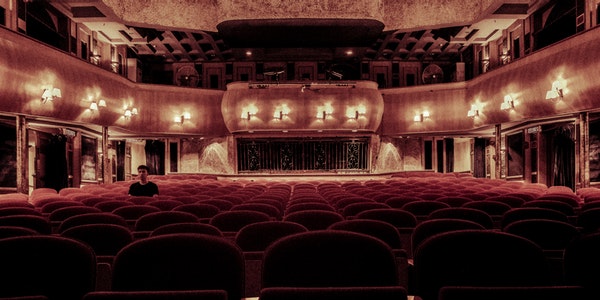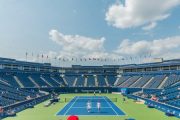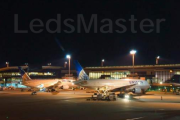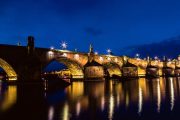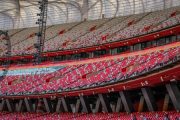Brief Introduction
Night scene lighting can express the details of the building, express the essence, express the functional characteristics of the building, highlight the cultural characteristics of the building, and add architectural charm. However, buildings with different functions have different lighting designs. If the facade of a building is illuminated at a certain distance, from the direction of the main light, the whole building will appear to have no sense of hierarchy.
Commonly used night scene lighting methods generally include flood lighting, contour lighting, accent lighting, internal lighting, local lighting, and mixed lighting. Among them, flood lighting is one of the more commonly used night scene lighting methods, and the number, position and projection angle of the lights are all key issues.
When determining the floodlight location and desired luminous amount and photometric characteristics, a number of factors need to be considered: surface quality and color, composition, viewpoint location, distance from objects, lighting in the surrounding area, and desired effect.
Therefore, this article will take you to understand: those things about floodlighting.
What is Floodlighting
The so-called floodlighting usually refers to a lighting method that uses a floodlight or floodlight to illuminate a scene or target, and its illuminance is significantly higher than the surrounding illuminance.
The purpose of floodlighting is varied. One is for safety or to continue working at night, such as parking lots, freight yards, etc. The second is to highlight the cultural characteristics of the building and add architectural charm, such as buildings and statues.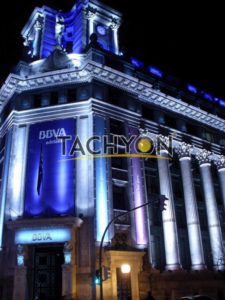
Flood Lighting Lamp
Generally speaking, the light colors used in architectural night scene lighting can be divided into white light and colored light. Among them, white light includes cool white light of about 6000k (such as the light emitted by daylight fluorescent lights, high-pressure mercury lights, etc.), warm white light of about 4000k (such as the light emitted by metal halide lights), and warm yellow of 2000~3000k light (such as light from incandescent high-pressure sodium lights, etc.). Colored gloss includes colored lights of various hues obtained by using colored light sources or color filters.
Since the light colors of various light sources are different, color filters are generally used when color light is required, and the brightness of its perspective will be greatly reduced. The color transmittance ratio is: amber color filter 0.4~0.6, red filter light 0.15~0.2, green color filter 0.05~0.1, blue color filter 0.03~0.05. Considering the absorption effect of the color filter, in order to obtain the same illuminance as the colorless light or the same decorative effect, the illuminance of the light source should be increased accordingly.
Technical Points of Floodlighting
Flood lighting should not “submerge the object in a sea of lights”, it should show the different planes and undulating contours of the object. Among them, the projection angle, projection distance, and direction of the floodlight are very important.
Angle of incidence
It is the shadows that bring out the undulations of the façade, so the lighting should always provide surface imaging. Lights that are directed at the facade will not cast shadows and will make the surface appear flat.
Shadow size depends on surface relief and the angle of incidence of the light. The average illumination direction angle should be 45°. If the fluctuation is extremely small, the angle should be greater than 45°.
Lighting side For surface lighting to appear balanced, all shadows should be cast in the same direction. All luminaires illuminating surfaces in a projection area shall have the same projection direction.
For example, if two lights are aimed symmetrically in the vertical direction of a surface, shadows will be reduced and confusion may appear. As a result, surface undulations may not be seen clearly.
However, large protrusions can create large, dense shadows. To avoid disrupting the integrity of the façade, it is advisable to provide weaker lighting at a 90° angle to the main lighting to soften the shadows.
View lighting direction
To see shadows and surface undulations, the lighting direction should be different from the viewing direction. The angle formed by these two directions should be at least 45°. However, for monuments that can be seen from several places, it is impossible to strictly follow this rule. The main viewing point should be chosen, and this viewing direction should be prioritized in the lighting design.
floodlight location
In urban settings, it is often not possible to install floodlights in the ideal location. The preliminary study based on the lighting design should be adjusted on site to take into account the physical constraints of the location and arrive at the most satisfactory solution. For example, the appearance under fluorescent light, glare, maintenance and adjustment of entrance, etc. should be considered.
Beam range
The beam width produced by floodlights may be larger or smaller. This depends on the adjustment of the optical system and the position of the light source in the luminaire. By convention, the beam range of a floodlight is determined by a luminous intensity direction equal to 50% of the peak luminous intensity up the beam axis. The beam range of the circular symmetrical floodlight remains unchanged on all sides. The beam range of a rectangular floodlight is usually oval, which is determined by two values corresponding to two symmetry planes.
In some applications, the luminaire beam used is asymmetric at peak light intensity. In this case, the beam range is equal to two half-angles determined by 50% of the light intensity.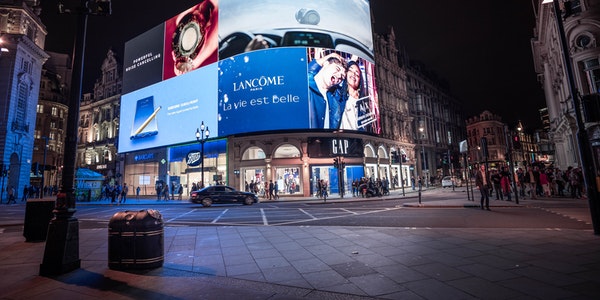
Light intensity distribution curve
Due to the narrow beam range of many floodlights, the curves in polar coordinates are impossible or inaccurate to read. Generally speaking, if X/Y is used to represent, the vertical axis OY represents the illuminance, and the horizontal axis OX represents the angle of the light beam. In most floodlights, shifting the light source of the optical system will change the shape of the distribution curve (beam range, intensity and symmetry).
Installation Location and Quantity of Floodlights
According to the characteristics of the building itself, the floodlights should be set at a certain distance away from the building as much as possible. In order to obtain a more uniform brightness, the ratio of its distance to the height of the building should not be less than 1/10. If conditions are limited, floodlights can be installed directly on the building body. When designing the facade structure of some buildings, the lighting needs of the appearance are considered, and there are installation platforms reserved for the installation of floodlights. This makes it impossible to see the light after installing the floodlight equipment, so as to maintain the integrity of the appearance of the building façade.
Floodlighting Principle
If you want to use floodlighting well, you must choose the light color reasonably. The color of light has emotional color, and the uncoordinated light color combination can make people feel uncomfortable.
In addition, it is necessary to master the characteristics of the building, architectural style, artistic conception, etc., find out the most striking features when projecting light from different angles, and select the facade illumination surface with the highest viewing rate.
Usually the principle requirements for flood lighting are:
- The material color and texture of the building façade details can be clearly seen in the near distance, and the building volume and the light color of the façade can be clearly seen in the distance.
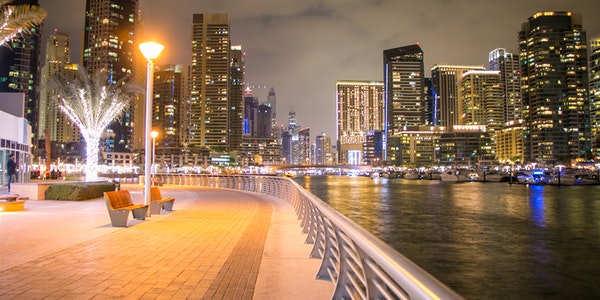
- To master the characteristics of the building facade, irradiate from several different angles in order to produce a significant three-dimensional effect, especially to produce a layered effect of light and color.
- It is necessary to highlight the illumination of the building facade, so that it can form a light and dark contrast with the surrounding environment, and give full play to the foil role of the surrounding environment.
- Understand the reflectance of building facade materials to light, and determine the required illuminance on this basis.
Prevent glare
In the design of night scene lighting, we often encounter a problem, and it is also the most difficult to avoid, that is – glare.
The common causes of glare can be roughly divided into the following points:
- The brightness of the light source (the higher the brightness, the more obvious the glare),
- The position of the light source (the closer to the line of sight, the more obvious the glare),
- Appearance size and quantity of the light source (the larger the apparent area, the more the number of light sources, the more obvious the glare),
- The surrounding environment (the darker the ambient brightness, the lower the eyes adapt to the brightness, and the more pronounced the glare).
So how to prevent glare in flood lighting design?
The surrounding lighting environment should be fully considered in the floodlighting design. In order to ensure good uniformity, the interval of lights installed on the building should be 2.5 to 3 times the length of the bracket. If the spacing is too wide, a fan-shaped spot area will be created.
In the floodlighting of buildings, the lights can be illuminated from bottom to top, so that it is less likely to cause glare.
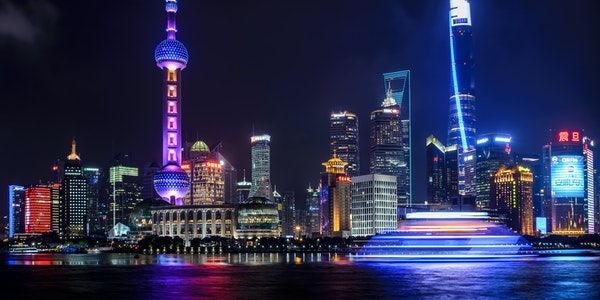
If side lighting is used, the occlusion of lights should be considered to reduce unnecessary light as much as possible. In the flood lighting of buildings, the lights are basically illuminated from the bottom to the top, which can avoid glare to the greatest extent.
Flood Lighting Combined with Surrounding Environment
If the same lighting method is used for the tall buildings on both sides of the city’s main roads, it will give people a dull and even dull feeling.
- It is necessary to consider the combination of the material of the building and the light source of the light. The illuminance of building flood lighting is generally between 15 and 450lx, and the size depends on the surrounding lighting conditions and the reflective ability of building materials.
- Consider the combination of the shape of the building and the color of the light source. Color lighting can be selected according to the shape of the building, creating a clear color contrast between the front and side of the building, adding a festive atmosphere.

